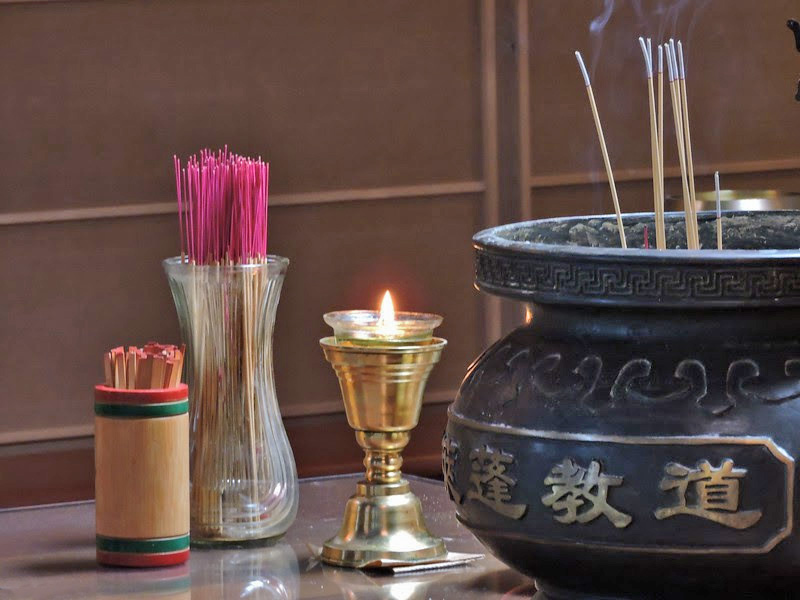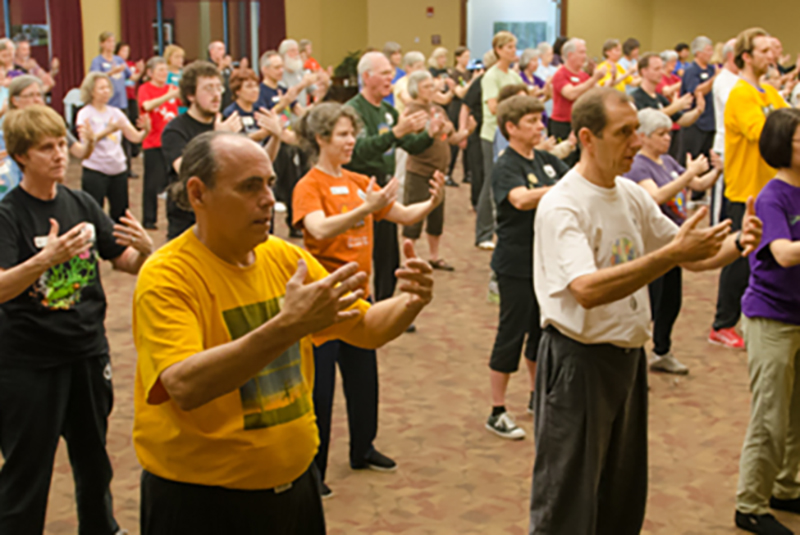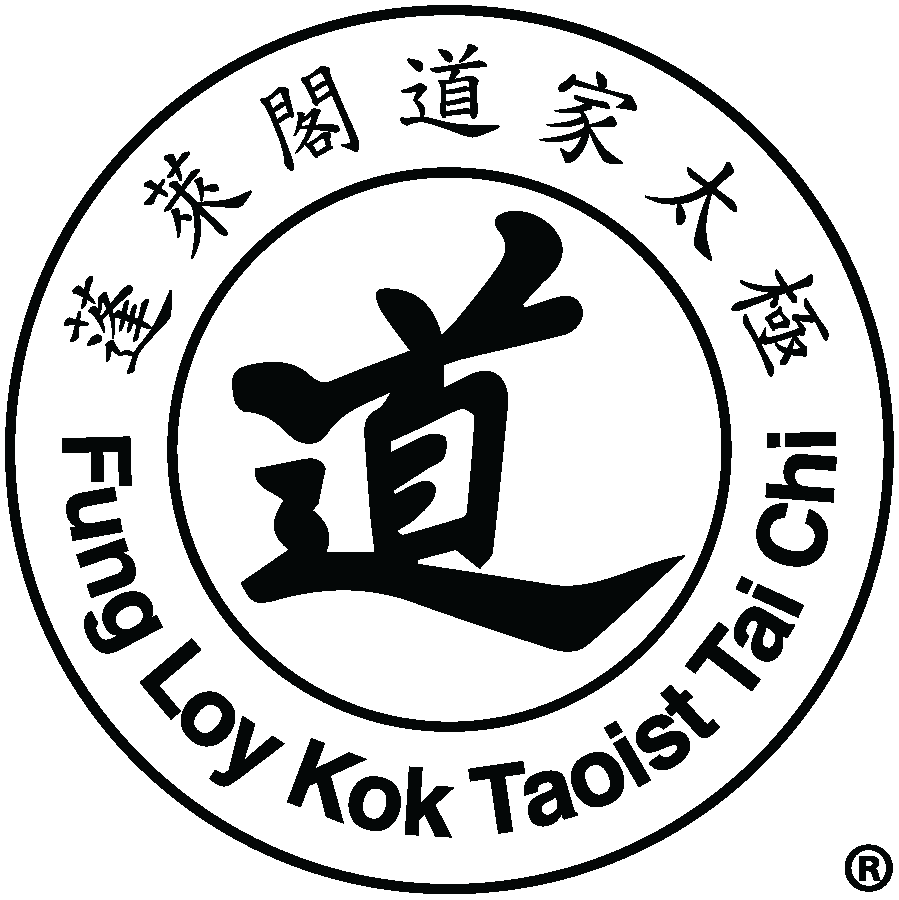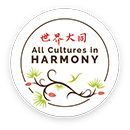Taoism: Cultivating Body, Mind and Spirit
The Taoist Tai Chi® arts are very practical, as is the Taoist tradition from which they spring. Although they are founded on the principles of internal alchemy, which has always been central to the Taoist monastic tradition, the arts taught by Master Moy are designed to facilitate Taoist internal training in an era in which people are no longer living in the monasteries but are devoting their time to social and family obligations.
Internal Alchemy
What is meant by internal alchemy in the Taoist arts? The alchemical or transformation process involves changing both body and mind to higher levels of functioning. Where Western thinking often splits mind and body into separate units, in the Taoist tradition, mental and physical development are closely related. While it is sometimes helpful to consider the physical and mental or meditative aspects separately, body and mind come together in the crucible of Taoist internal alchemy. One cannot transform the body without the mind and vice versa.
The goal of Taoist internal alchemy is to “return to the Source,” a concept which has a number of levels of meaning. On one level, returning to the Source means returning to what Taoism calls the “Original Body” characterized by good health and unlimited energy. From the Taoist perspective, the Original or “Golden Body” tends to be lost as we grow and develop in the world. Factors such as bad eating habits, poor posture, stress, and anxieties cause our bodies to lose the health and vitality that we should possess. This understanding of the deterioration of the body is compatible in many ways with Western views of the aging process, except that Taoism does not see the severe decline in health usually associated with aging as inevitable. Instead, the Taoist arts seek to reverse this process of degeneration, enabling practitioners to age in a healthier way.

Taoist Arts and Health
The unique health benefits of the Taoist Tai Chi® arts as taught by Fung Loy Kok Institute of Taoism stem from the fact that they are complete and integrated, working all of the body’s systems deeply yet gently. As one progresses, Tai Chi becomes an increasingly internal exercise, working the inside of the body as well as its external structures.
Considered from an Eastern perspective, these arts promote good health by enhancing the circulation of chi (qi) or intrinsic energy in the body. According to Chinese medicine, ill health comes about as a result of impairments in the flow of this internal energy through specific pathways (or meridians). The 108 movements are designed to open up blockages along the meridians, allowing energy to flow freely through key areas in the body and to nourish and stimulate the internal organs to which the meridian are connected. In addition, this form of Tai Chi works to balance and purify the internal energy as a further means of transforming body and mind to higher levels of functioning. At its deepest levels, in Taoism this training is a path to ultimate transformation, or immortality.
The health benefits of the Taoist arts can also be understood in terms of Western approaches to health. They gradually and gently work to strengthen and transform virtually every part and system of the body. The beginning student will probably first notice how Tai Chi works the larger muscle groups in the legs, arms, and back, gently stretching them and making them more resilient while releasing unnecessary muscle tension. This stretching also benefits the joints, tendons, and ligaments, taking them through their full range of motion to achieve maximum flexibility and reduce the natural deterioration of the joints that tends to occur with age. As they continue with their training, students continue to find movement and balance at progressively deeper levels, leading to benefits in every system of the body. At the same time, the practice promotes profound relaxation, becoming a form of meditation transforming the functioning of both mind and body.
Original Nature of Compassion
As this meditative aspect suggests, the recovery of physical health through the Taoist arts is only a part of the transformation process. Returning to the original body is a vital aspect of Taoist internal alchemy and the “Golden Body” can be seen as one of its most valuable products. But the process of recovering the original body offers only one understanding of the rich concept of the return to the Source. On another level, returning to the Source means returning to our original nature of compassion and selflessness.
Taoists believe that there is a spark of goodness within all of us. This is the original nature with which we are born. As we interact with the world around us, our original nature becomes clouded and we become self-centred and accumulate bad habits. Taoist training seeks to eliminate these weaknesses so that our original nature of goodness can again shine brightly, guiding our thought and actions. Thus, while folklore often portrays Taoists as hermits who spend their lives meditating in remote caves in the mountains, the foundation of both Taoism and the Taoist Tai Chi® arts is compassion and service to others, and it is developed as we live out our everyday lives. In sharing the health-giving qualities of these arts, selflessly and without seeking personal gain, students of the Taoist arts take the first steps toward recovering this intrinsic goodness, which in Taoism is seen as fundamental to complete health, and toward restoring the balance and harmony of the original or ideal state of existence.

Meditation
A related aim of Taoist internal alchemy is to return to a state of consciousness in which we can see original nature in the midst of the clutter of distortions characterizing our life in this world. In the Taoist tradition, meditation, which seeks to achieve a state of stillness by emptying all thoughts from the mind, has long been an important means of doing this. When we are able to turn our consciousness away from the outside world, we can turn inward and see our original nature. It is not easy to achieve the state of emptiness or stillness in the midst of today’s busy and complex lifestyle. To achieve stillness and yet be involved and active is even more difficult. Practicing the Taoist Tai Chi® arts fosters stillness since the focused concentration required to do Tai Chi (and developed in learning it) occupies the mind, drawing it away from daily worries and tension. Learning to quiet the mind, even while moving through the set, lays a foundation for integrating the principle of stillness and the recognition of our original nature into our daily lives.


